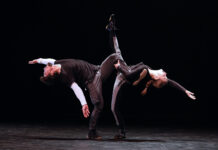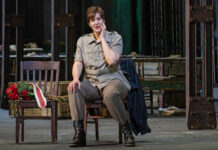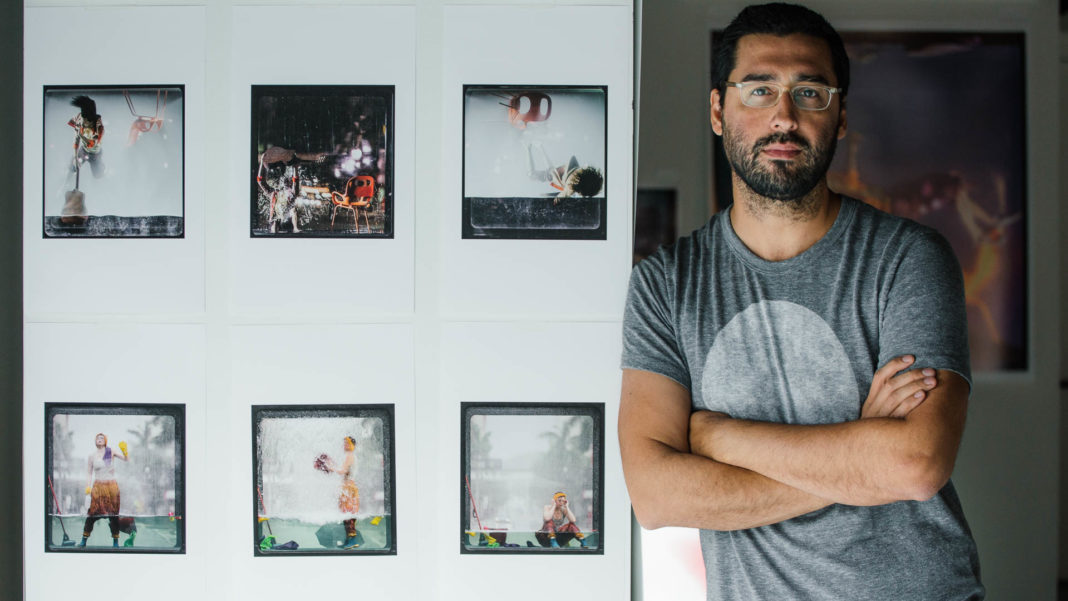The first time celebrated writer Joan Didion had one of her works turned into a piece of theatre it was The Year of Magical Thinking. Vanessa Redgrave played Didion as she spoke of the trials and tribulations of her marriage and the loss of her husband, John Gregory Dunne. Now a second Didion book has been adapted for the stage and it is The White Album, a series of essays published in 1979
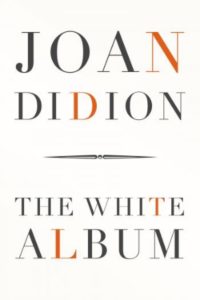
The book was Didion’s examination of socio/political and cultural events of the late 60s while at the same time taking a look inward at her own issues with depression.
Los Angeles-based director/writer/artist Lars Jan presents his realization of Didion’s work starting tonight at the Freud Playhouse for four performances. The production utilizes the first essay in the book. That essay uses the same title as the book.
Mia Barron, who happens to be Jan’s partner, recites Didion’s text while a group of people, housed in a glass box, seem to be having a party of their own. The other group of people is you, the audience.
If it sounds a little confusing, Jan is much better at explaining it since it is, after all, his creation.
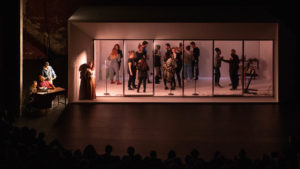
Let’s start with the concept for the show. Can you put into words what exactly you are doing with The White Album?
In our show there are two different audiences. Traditional theatre seating, akin to the demographics of usual theatre, tends to skew older and more white than the population. Our inner audience is mostly in their 20s. We are pulling mostly from students, artists and activists. They start two hours before the show. They talk, they see information about the Berkeley police, student protests, Joan Didion, The Doors, Charles Manson and essential topics and figures covered in the essay. They can’t get distracted by the name dropping which is no longer relevant. But they can understand the movement and what it represented more and follow Didion’s thought process and have a more informed opinion of why she does so. The piece culminates in a conversation with the inner and outer audience and the creative team which is not a talkback, but part of the show.
When did you first become aware of The White Album and when did the idea of doing a theatrical production inspired by it first come to you?
I read the essay in high school when I was 16 or 17 – which is about 20 years ago. It’s the piece of writing I’ve returned to most in my life. I’ve always found Joan Didion herself to be a compelling character. I found the essay to be a very compelling and theatrical monologue. Maybe a decade or a little more ago, I first had the image of a Joan Didion-type in a house party and I was seeing through the glass window of a house in Malibu. A Didion figure steps out onto the veranda and starts talking and the party continues behind her. She has a drink in hand. That’s how I saw the essay performed – as the background of one of her house parties.
How challenging was it to get Didion to approve of you concept and grant the rights to use the essay?
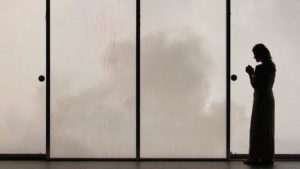
Maybe 4-5 years ago I did my first inquiry into the rights. I didn’t get responses. We wrote Joan letters and eventually the Brooklyn Academy of Music [BAM] asked what I wanted to do. They said, “Maybe we can help.” We started triangulating and we worked on a bunch of pressure points.
Eventually Mia got to her nephew, Griffin Dunne, through a mutual friend. Griffin was aware of Mia’s work and tangentially mine. We had a green light within 24 hours.
Were there any restrictions on what you could do with the essay?
The one commitment we made, that they didn’t ask for, but figured into the approval, was I don’t want to deconstruct it. I want to perform every word from beginning to end. Once I said that there were no other restrictions.
Thematically there is a lot that was documented by Didion that still resonates today. What did you want to say, as an artist, about the times we live in?
I’ve always been incredibly inspired by the many movements that coalesce in the late 60s, particularly student movements, the Black Panthers, women’s and civil rights before that. The forming of coalitions to raise fundamental questions about the direction of our history. That was the first time we really did that as a country. You have this dialectic between the observer and the observed.
Didion’s beautiful mind forms a particular perspective of history and time and is gorgeously expressed. On the other hand, the essay is 50 years old. I wanted to embrace the timeliness of her capacity to make sense of her time, but also explore the distance of those she’s covering from the outside. The questions they were asking are still incredibly current.Â
On Joan Didion’s website she has a selection of quotes. One of them comes from A Book of Common Prayer: “We all remember what we need to remember.” Do you agree with her?
That’s a pretty short sentence. It sounds like an epitaph. It sounds like what you write on a civilization’s gravestone. I think we have to work very hard to remember things that the most predominant power structures would like us to forget.
Need is a complicated word. It makes me think of King Lear, “O, Reason Not the Need.” Need is profoundly skewed by privilege. We’re finding that out every day. But need is a funny word that is often used to liberally. It’s used like the word “hate.” They are very strong words and as a society we’re far too prone to hyperbole.
For tickets go here.
Profile photo by Kawai Matthews. Other photos by Lars Jan. All courtesy of CapUCLA.




